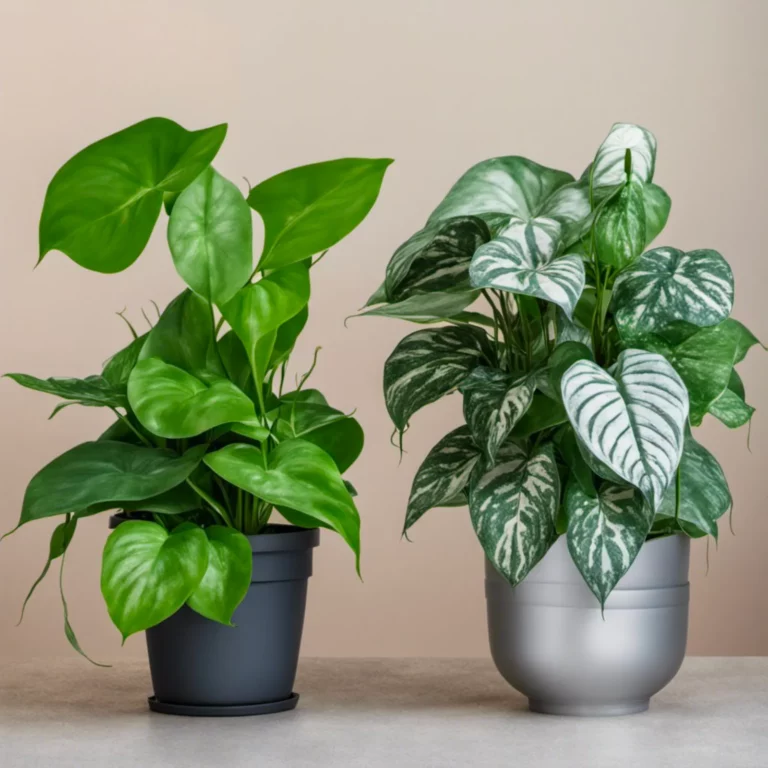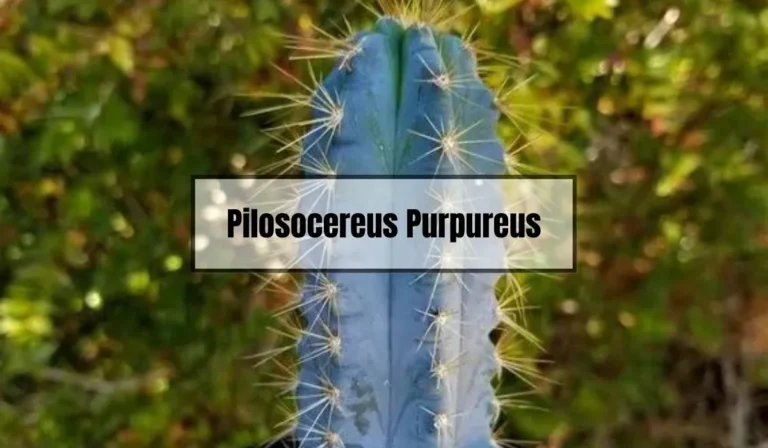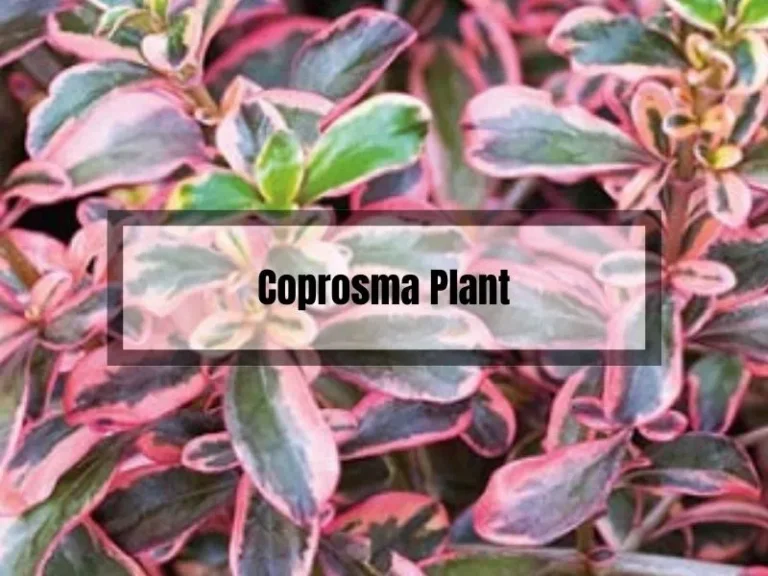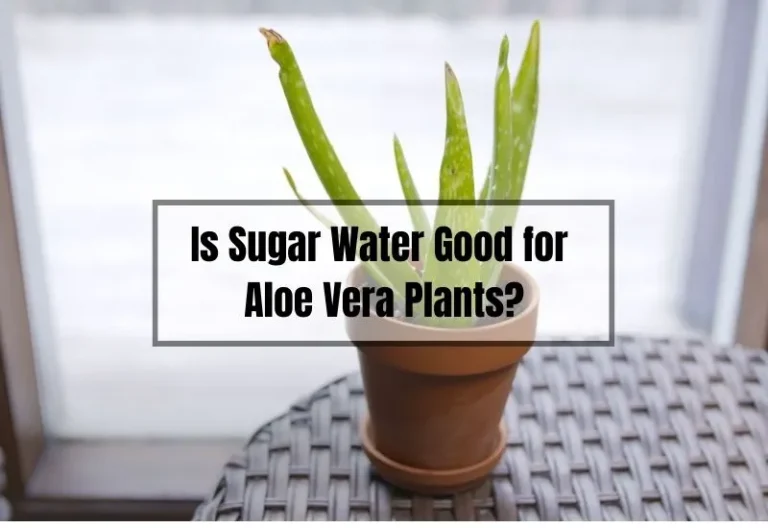Discover the Charm of Purple Succulents: 14 Stunning Varieties for Your Home Decor
From Louise: Passionate about gardening, I specialize in plant care and flower knowledge. I’m here to share my expertise and assist with your gardening queries. Feel free to ask any questions or seek advice on lawn care—I’ll respond within 24 hours!
If you’re looking for a unique way to add color to your home, why not consider purple succulents? These fleshy-leaved plants come in a variety of shades, from deep eggplant to soft lavender, and can add a touch of whimsy and elegance to any room.
In this guide, we’ll introduce you to 14 of the most beautiful purple succulent varieties to help you find the perfect addition to your home.
Succulents are known for their easy-care nature and ability to thrive in a range of environments, making them a popular choice for plant lovers of all skill levels. Purple succulents, in particular, are a great option for those looking to add a pop of color to their space without the maintenance requirements of more delicate blooms.
Whether you’re a seasoned succulent enthusiast or a newbie looking to add some greenery to your home, this guide will provide you with all the information you need to choose the perfect purple succulent for your space.

What Are Succulents?
Succulents are plants with fleshy and thick leaves, stems, or roots that store water, making them well-suited for arid or dry environments. They come in a range of colors, shapes, and sizes, and are increasingly popular as decorative plants and houseplants.
Succulents are notable for their adaptability to different settings. They can endure long periods without water, thanks to their water storage capabilities in their leaves, stems, or roots. For people living in regions with low rainfall or who have limited time to care for plants, succulents are an excellent option.
In addition to their adaptability, succulents are known for their distinctive appearance. They come in various shapes, including round and spiky, and some even have brightly colored leaves or flowers that can add a burst of color to any space.
Succulents have a long history that dates back thousands of years. They were used for medicinal purposes in ancient times and valued for their ability to survive in extreme environments. Today, succulents continue to be popular as ornamental plants and are cultivated worldwide.
Why Choose Purple Succulents?
If you’re looking to add a pop of color to your home, purple succulents are a great choice. While green succulents are beautiful in their own right, purple succulents offer a unique and eye-catching look that can really make a statement in any room. Here are a few reasons why you should consider adding some purple succulents to your collection:
- Purple succulents are incredibly versatile. They come in a wide range of shapes and sizes, so you can find one that fits in with just about any decor style.
- They’re low-maintenance. Like all succulents, purple succulents are easy to care for and don’t require a lot of attention. They’re perfect for busy people who want to enjoy the beauty of plants without a lot of upkeep.
- Purple is a calming color. If you’re looking to create a peaceful and relaxing space in your home, purple succulents can help. The color purple is often associated with tranquility and peace, making these plants a great choice for bedrooms, living rooms, and other areas where you want to unwind.
- They’re unique. While green succulents are certainly beautiful, they’re also quite common. If you want to stand out and showcase your individual style, purple succulents are a great way to do it. They’re not as common as green succulents, so they’re sure to catch the eye of anyone who enters your home.
Overall, purple succulents are a great choice for anyone who wants to add a touch of color to their home. With their unique look and easy care requirements, they’re sure to be a hit with anyone who loves plants.
14 Purple Succulents
- Echeveria’ Purple Pearl’
- Echeveria’ Black Prince’
- Echeveria’ Afterglow’
- Echeveria lilacina (Ghost Echeveria)
- Echeveria Perle Von Nunberg
- Sempervivum’ Raspberry Ice’ (Dark Beauty)
- Graptoveria ‘Bashful’
- Graptoveria ‘Debbi’
- Sedeveria’ Lilac Mist’
- Anacampseros’ Purple Giant’
- Pachyveria Powder Puff
- Sedum dasyphyllum
- Tradescantia Pallida ‘Purpurea (Purple Heart)
- Purple Prickly Pear
- Aeonium Arboreum (Purple Aeonium)
1. Echeveria ‘Purple Pear’
There is no better way to dive into this list than with the Echeveria’ Purple Pear’! A native of Mexico, this plant is known for its striking foliage. Its foliage looks like fleshy paddles arranged in a rosette shape, ending in fine points.
It is hard not to be enthralled by the olive-coloured leaves with lavender purple edges; not to forget, their stunning pink flowers are to die for! This Echeveria is a popularly grown houseplant in areas with moderate to tropical climates.
Like most succulents, the Echeveria ‘Purple Pear’ is a low-maintenance plant, hence, does not require too much of your attention. All you need to do is water them during the summer, and you can leave the soil dry during the winter.
If you are planting the Purple Pear outside, you can either choose a location with bright sunlight or speckled shade. However, if you want your plant exhibit super vibrant colours, you must give it maximum exposure to the sun. If you are a pet owner, the Purple Pear is a great option because of how pet-friendly it is!
Find out what there is to know about flowering succulents!
2. Echeveria ‘Black Prince’
The Echeveria’ Black Prince’ looks just as dramatic as it sounds. The ‘Black Prince’ is a hybrid of the plants, Echeveria shaviana and Echeveria affinis. This plant features enthralling spoon-shaped leaves that are popular for their green to a dark purple colour gradient. The dark purple that you see on this plant deepens when exposed to the sun and almost turns black.
The dark red flowers it produces are the perfect contrast to the dark foliage of the ‘Black Prince’. Incorporating the Echeveria’ Black Prince’ into your succulent collection will give the display the striking, dark, and dramatic statement it needs.
Coming to its watering needs, you may not want to go too crazy with it. All you need to do is water it once and wait for it to dry out before you water it again fully. In due time, you may start observing the formation of offshoots from the primary rosette. You can either remove these or let them expand your dark family!
3. Echeveria ‘Afterglow’
The Afterglow offers large rosettes that will remind you of roses because of their slender foliage with a subtly ruffled appearance. This plant is especially and known and widely grown for its stunning foliage. The blue-grey-colored leaves are flushed with lilac-pink and are a light purple around their edges. They also offer striking orange flowers during the summer season.
This plant is widely grown in cold climates where outdoor plantation cannot be adapted. When grown outside, you can either expose it fully to the bright sun or keep it in partial shade. However, to exploit its best colour, you should allow it to have maximum exposure to the sun.
You can always remove the flower stems on before blooming if that’s what you prefer. Many people opt to get rid of them and save that energy to focus on the growth of foliage. The Echeveria’ Afterglow’, after significant development, is extremely drought-tolerant. Ensure that you grow it in soil that drains efficiently.
4. Echeveria Lilacina (Ghost Echeveria)
Next is yet another Echeveria: the Lilacina! This charming Mexican succulent has silver-grey rosettes that boast a beautiful coral pink hue when the sun hits. It is also called the ‘Ghost Echeveria’ because of its foggy matte leaves.
The lilac foliage, light pink flowers, and red stems are just one of the reasons this houseplant would make an excellent addition to your succulent display. These plants generally flower from late winter until spring begins.
After going through all these beautiful Echeverias, check out how you can grow one!
5. Echeveria Perle Von Nurnberg
Finally, the last Echeveria on this list is the Perle Von Nurnberg! It is hard not to be mesmerized by the pretty purple colour it acquires when exposed to bright sunlight. As soft as its beauty makes it look, it also is known for its hardiness.
The pastel grey leaves create the most beautiful rosette shape which generally grows about 15-20 cm wide. Their red flowers are like the cherry on top on this gorgeous succulent; they are just as appealing to humans as they are to hummingbirds!
This Echeveria enjoys a bright light but will also thrive in partial shade with sufficient sunlight. Please make sure you grow it in soil that drains well for best results.
Here are more Echeveria varieties for you to check out!
6. Sempervivum’ Raspberry Ice’
If resistance is what you are expecting from your succulent, you have found yourself a great suitor! Commonly known as “Houseleek”, the Sempervivum’ Raspberry Ice’ is highly adaptable and can adjust to almost any environmental condition. It is also extremely pest and disease-tolerant.
The ‘Dark Beauty’ is known for its deep purple tones. When summer is around, you will notice beautiful flowers blossom, attracting various insects. However, you must wait until your Sempervivum fully develops before it blossoms to offer flowers. This unique plant has cobwebbed white hairs that cover its fleshy, oval leaves and acquire various shades of purple and burgundy. As the leaves mature, they change colour to acquire various shade of violet and lilac.
This low-growing perennial enjoys sunny to moderate climates. Like most succulents, the Sempervivum need not be watered too much and mostly thrives in dry soil during the winter season.
“Hens and Chicks” is another name given to this plant because of the way its offshoots grow to produce new plants. If you wish to expand your plant family, Sempervivum is a great choice for you. You can conveniently increase the numbers of all Sempervivums. All you need to do is remove the baby rosettes form the mother and plant them again. You will have a lush Sempervivum family in no time!
You will notice that once the Sempervivum has blossomed, it will gradually start to die. You need to remove the dying plant carefully, so the younger plants have enough space to grow into their surroundings.
7. Graptoveria ‘Bashful’
This plant’s genus is a hybrid between Graptopetalum and Echeveria. They feature thick, spoon-shaped leaves with pointed tips. Under sunlight, the pastel green foliage exhibits pick shades. As the seasons’ progress, you will notice the plant turn colour to a blush red from its usual green.
The elegant, white flowers it produces when it blooms in spring are brilliant. Along with other succulents, it does great in rock gardens and gradually spreads as it grows.
As enchanting as it looks, the downside of this plant is how delicate it is. The Graptoveria’ Bashful’ is not capable of surviving during winters in extreme temperatures. In such conditions, move it indoors if you are using it for your garden or outdoor display. It is best if it gets bright sunlight daily.
8. Graptoveria ‘Debbi’
Another Graptoveria hybrid is the Graptoveria’ Debbi’. This low-level purple plant dazzling plant features some dramatic foliage that you cannot take your eyes off of! It loves the bright sun and maximum heat of a warm, sunny garden. You will see clumps of a rosette in this plant. The green leaves generally turn colour into shades of pink and purple.
You do not need to do extra work for it to spread because it multiples fats and simple on its own. Make sure that you choose a location where it gets enough light, or its violet shade will start to fade. If you happen to be a pet owner, you have nothing to worry about because this plant is also non-toxic and super animal-friendly.
9. Anacampseros Purple Giant
The Anacampseros Purple Giant is a small succulent of a perennial species, perfect for all your succulent indoor needs. You can decorate them in containers around your home or garden!
Its pretty plum colour and unique shell-like leaves are not the features that make this plant stand out; it has long, white hair growing out of its stem. It also has yellow stamens that hold exquisite purple flowers. The purple foliage of the Anacampseros is hard to miss. Initially, the leaves are a dark shade of green and later acquire a deep plum colour.
The Purple Giant does not mind enjoying some shade, unlike many other succulents. It can also thrive under bright sun conditions.
It is highly resistant and can tolerate unfavourable environmental conditions. One thing you must keep in mind is not to overwater it. Please wait till the soil is completely dried out before watering it again.
10. Pachyveria Powder Puff
This small, shrub-like succulent has features striking blue-green leaves. When you think they can’t get more stunning; the Pachyveria Powder Puff acquire a deep violet undertone when exposed to either intense light or cold climate!
This pant is a hybrid between Echeveria cante and Pachyphytum oviferum. It produces one multi-flowered stamen that comes in various alluring shades of purple and pink.
Winters are when these succulents grow the most, and they need to be watered more during these months. It is comparatively harder than many other succulents and is capable of tolerating a certain degree of coldness. Make sure to maintain the temperature above 7-degree Celsius to keep them alive and thriving.
11. Sedum Dasyphyllum
Also known as “Corsican Stonecrop”, this Mediterranean plant is a type of low-growing shrub and is perfect for covering rockeries. Often seen in Alpine gardens, the Sedum Dasyphyllum is one of the toughest perennials there is!
Along with its mint foliage, this plant also has a gorgeous lilac purple colour when exposed to the sun. When June or July is around, you will see the Sedum bloom to give pretty pink and white flowers. It has small, flat leaves with rounded tips that are green in colour initially. As the plant matures, the leaves turn purple.
Use free-draining medium while potting these plants, as they grow best in poor soil. While picking a location for you Stonecrop, make sure there is enough bright light. These plants tend to lose their gorgeous lavender shades and go back to being green if kept in the excessive shade.
12. Tradescantia Pallida ‘Purpurea’ (Purple Heart)
Like the Sedum Dasyphyllum, the Tradescantia Pallida is another ground-covering plant. The Purple Heart is also a worthy competitor if you are looking to have an elegant hanging basket display around your home or garden.
These plants feature unique green leaves that are shaped like swords, growing around its stem. The light pink flowers that bloom in the summer are an excellent contrast to the purple-burgundy seen on the leaf margins.
Unfortunately, there is one downside: As hardy as these plants are in hot and arid climates, they have a tough time surviving in the cold. Therefore, if you are looking for a plant for cold weather, you may want to keep looking.
Make sure the spot you choose for your Tradescantia is super sunny, so it does not lose its pretty purple hues. Unlike most succulents on this list, the Purple Heart prefers moist soil over being kept dry. However, be careful not to overwater it and to allow good drainage from the pot.
Check out this guide to growing a Tradescantia Pallida!
13. Purple Prickly Pear
Form southern United States and a part of Mexico, this cactus blooms in early spring and offers captivating red and yellow flowers. The large, fleshy pad-like foliage can grow anywhere from three to seven inches, once they fully develop.
Each of these pads develops spines whose colour can be black, yellow, or white, differing from plant to plant. The colour of this foliage can range from blue-green to violet. You will notice more purple around the edges and then starts to fade as it goes inwards.
The Purple Prickly Pear grows to its full potential in dry soil. Nevertheless, it is capable of thriving in any soil as long as it is well-draining. It is extremely tolerant to drought once it fully develops. Like most succulents, water it just enough to avoid drying out the soil. You can either choose a sunny spot or one that is partial shade.
14. Aeonium Arboreum (Purple Aeonium)
The last succulent on our list is native to North Africa and the Canary Islands, growing through heat all year-round. The Aeonium Arboreum features enchanting rosettes made of leaves in various shades of purple.
These rosettes turn into a deeper purple under the light sometimes, almost looking black. It is ideally grown in containers and will fit right in on your patio!
Like the Echeveria’ Black Prince’, this too can make quite a dramatic statement with its purple rosettes and woody branches. The Purple Aeonium is highly resistant to drought and can also tolerate salt and poor soils. Hence, if you live in coastal or Mediterranean areas, these are a perfect choice.
This plant thrives best in bright sun but can also survive in partial shade. You need to make sure that you water the plants just enough, so they do not end up drying up during the winter. Summer tends to be their dormant period, hence, avoid watering them in those months.
How to Care for Purple Succulents
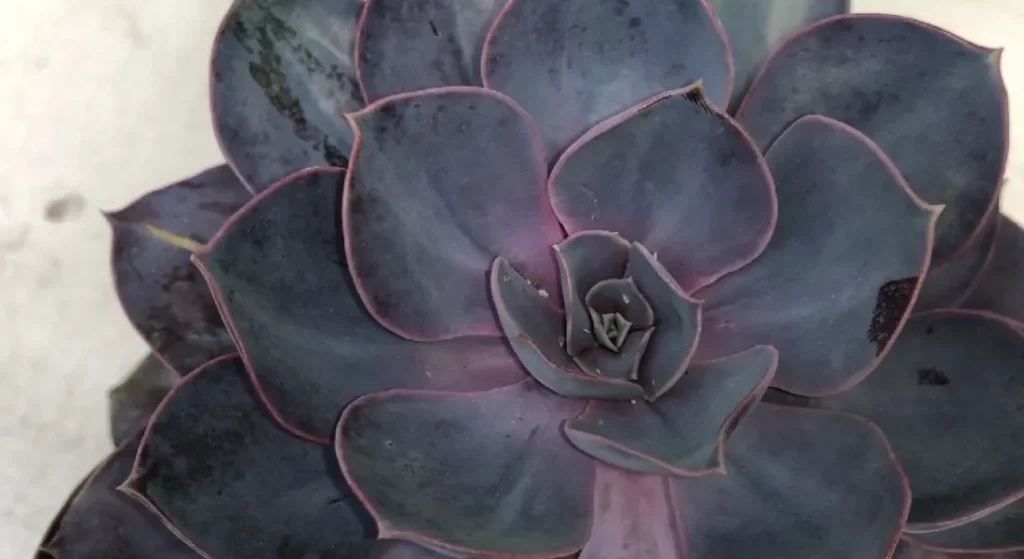
When it comes to caring for purple succulents, there are a few key things you should keep in mind to ensure that your plants thrive and remain healthy. Here are some tips on how to care for your purple succulents:
Soil and Potting Recommendations
Succulents generally prefer well-draining soil that is sandy or gritty in texture. You can purchase a pre-made succulent soil mix or create your own by mixing sand, perlite, and potting soil.
When potting your purple succulents, be sure to choose a container with adequate drainage holes to prevent overwatering.
Watering Frequency and Amounts
When it comes to watering your purple succulents, it’s important to avoid overwatering. Succulents store water in their leaves, so they don’t need to be watered as often as other types of plants.
Wait until the soil has completely dried out before watering, and then water deeply until the excess water runs out of the drainage holes. In general, succulents need to be watered about once a week during the growing season, and even less frequently during the dormant season.
Best Lighting Conditions
Most succulents prefer bright, indirect sunlight. Place your purple succulents in a location that receives at least six hours of bright, indirect sunlight per day. However, be careful not to expose them to direct sunlight for extended periods of time, as this can cause sunburn or scorching.
Common Problems and How to Solve Them
One of the most common problems with succulents is overwatering. This can lead to root rot and other issues. To prevent overwatering, be sure to wait until the soil has completely dried out before watering your plants. Another common problem is pest infestations.
Mealybugs, spider mites, and scale insects are common pests that can affect succulents. To prevent pest infestations, be sure to inspect your plants regularly and treat any infestations promptly with insecticidal soap or neem oil.
By following these tips for caring for your purple succulents, you can ensure that your plants remain healthy and vibrant for years to come. With the right soil, watering schedule, lighting conditions, and pest control measures, your purple succulents will thrive and add a pop of color to your home.
Frequently Asked Questions (FAQs)
What makes succulents purple?
The coloration of succulents, including purple ones, is due to the presence of certain pigments in their cells. The primary pigment responsible for the purple color in succulents is anthocyanin, which is a type of flavonoid. Anthocyanin is produced in response to certain environmental factors, such as light intensity, temperature, and water stress. Different types of succulents produce different amounts of anthocyanin, which can result in varying shades of purple.
Are purple succulents more difficult to care for than other succulent species?
No, purple succulents are not inherently more difficult to care for than other succulent species. However, like all succulents, they do have specific care requirements, such as well-draining soil, infrequent watering, and plenty of bright, indirect light. If these needs are not met, any succulent, including purple ones, may struggle and eventually die. As long as their care needs are met, purple succulents can thrive and add a beautiful pop of color to your home.
Can I propagate purple succulents?
Yes, you can propagate purple succulents using a variety of methods, such as stem or leaf cuttings. The process for propagating purple succulents is the same as for other succulent species. It’s important to note that some varieties of purple succulents, such as Echeveria ‘Perle von Nurnberg’, may be more challenging to propagate than others.
How often do I need to fertilize my purple succulents?
Purple succulents, like all succulents, do not require frequent fertilization. In fact, over-fertilization can harm them. A good rule of thumb is to fertilize your purple succulents once every three to four months during their growing season (typically spring and summer). Use a balanced, water-soluble fertilizer and dilute it to half strength before applying.
Do purple succulents have any special requirements compared to other succulent species?
Purple succulents do not have any special requirements that differ from other succulent species. However, it’s worth noting that some varieties may require more or less light or water than others. For example, some purple succulents, such as Haworthia ‘Superfasciata’, prefer partial shade rather than full sun. Always research the specific care requirements of the purple succulent variety you have to ensure you are providing the optimal growing conditions.
Summary
We have reached the end of our post! In this list of 15 Purple Succulents, we aimed to showcase some of the best options for your home or garden.
Succulents are available in various shapes, sizes, and hues, and among them are the striking purple varieties. These plants are particularly popular due to their adaptability and fascinating appearance. The purple leaves of the succulents mentioned above are sure to uplift your mood every day!
We hope this post has inspired you with ideas on how to spruce up dull spaces using purple succulents. Just remember to expose them to enough sunlight to maintain their vibrant color.

